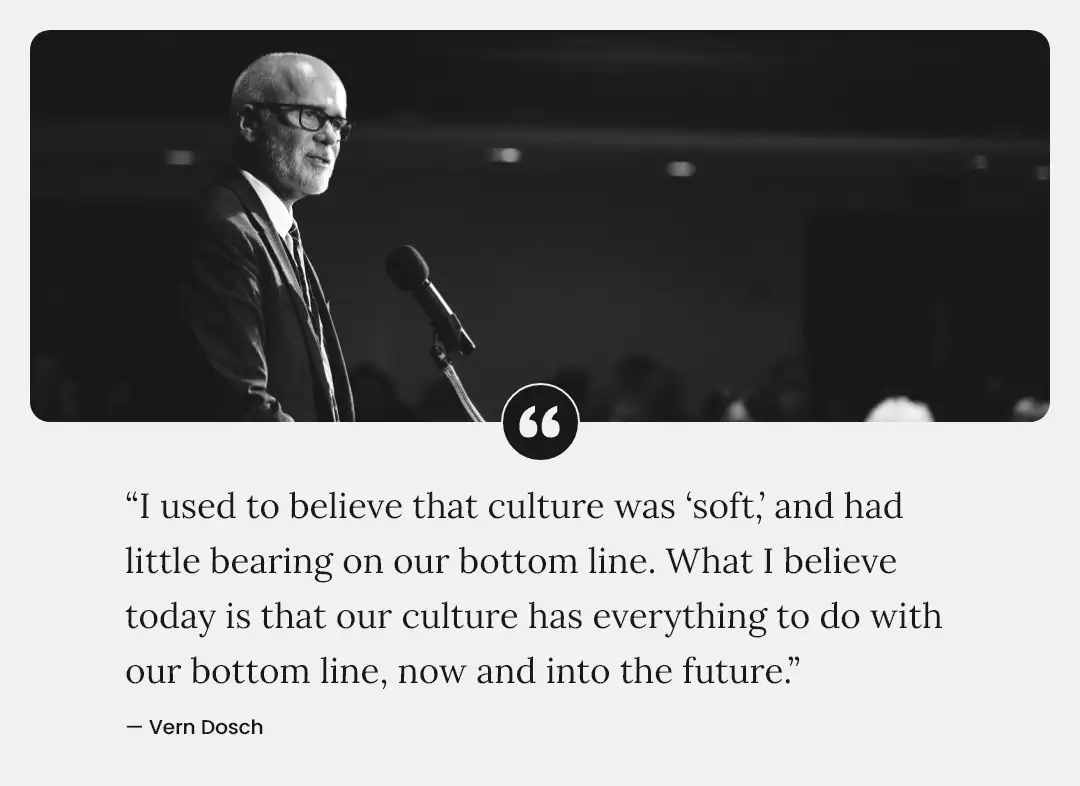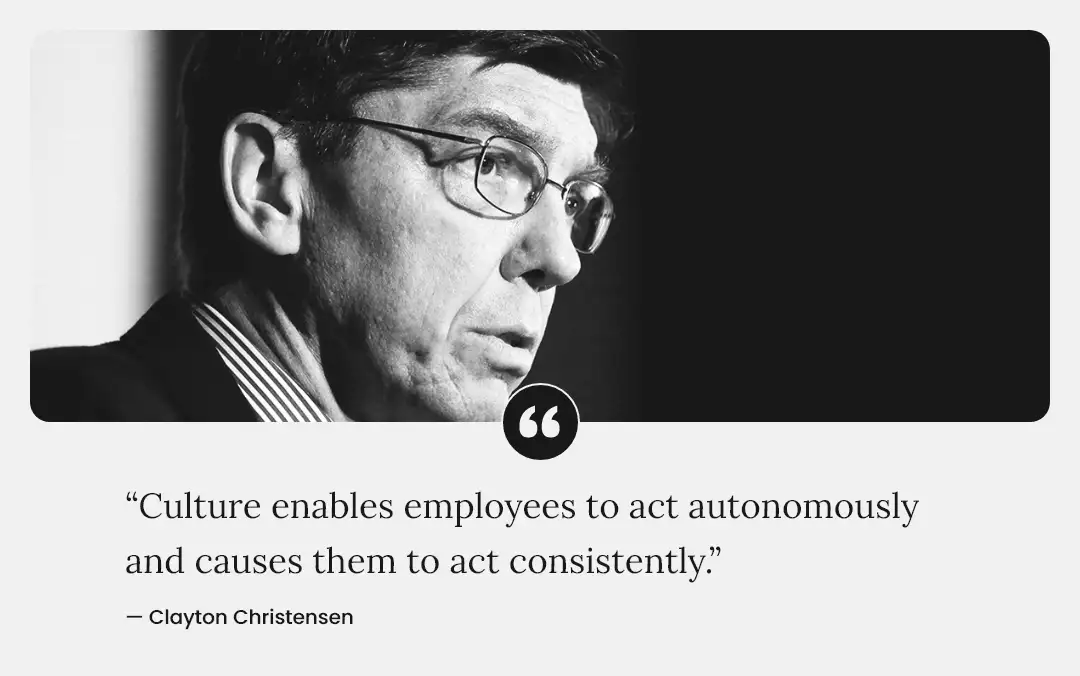What You Might Have Missed from DecisionWise
- Tina Schust Robinson helped a company unleash the power of their 360 degree assessments. Here’s how they did it.
- Employee satisfaction vs. employee engagement? This 45 second video will help you understand the difference.
- Unhappy employees? You might only be seeing the tip of the iceberg. Here’s what might be under the surface.
- Are you on LinkedIn? If so, we’d love to add your valuable insights to the 360 Feedback and Employee Experience groups we moderate.
- If you’re not following this one simple step as a leader, you’re sabotaging your team.
- We were at SHRM this month and Kaley from our marketing team made this fun timelapse video of the setup! It was so wonderful to see friends and associates there!
- Employee engagement: sometimes misunderstood but always critical. Check out this definition of engagement. What would you add?
- Take this quiz to find out how well you really understand your employees 👀
- DecisionWise just got that much better! We’ve hired some amazing new employees and featured them in this LinkedIn post. Plus, they’re sharing their favorite albums of all time. Is yours on the list?
- In 2022 executives rated the inclusivity of their culture 10.22% higher than the rest of their organization. Here’s what that means for you and your organization.
Featured Discussion
As a leader moves up the ladder inside an organization, they may find themselves playing a key role on two different teams – the team they manage, and the team comprised of their peers. These peer teams are sometimes referred to as senior leadership teams.
In our work, our firm has helped numerous senior leaders understand and absorb their 360-degree feedback. Interestingly, one question that often stumps those we coach is this –– which is your primary team? Do you belong to the team you manage or your cross-functional team of peers?
As newly minted managers become so highly focused on building relationships with those they lead, they often forget to forge relationships with their peers. To be successful, a new manager will need the support of not only the team they oversee but also other business functions and individuals. And, since these managers do not have direct authority over their peers, they cannot simply demand help whenever the need arises.
As a person grows and develops, interactions with their peers become even more formal and structured. The dynamic moves from a network of colleagues to a defined team structure. At this point, we come to a significant crossroads –– where should a leader’s focus primarily reside, and, more importantly, where should allegiances lie?
To answer this question, let us review some research being conducted by one of our leaders here at DecisionWise, David Long. For a few years now, Dave has been analyzing the differences between three classifications of a manager:
- Org-First managers
- Team-First managers
- Me-First managers
Dave has been examining our database of over 50 million employee survey responses based on these classifications to see which manager type contributes the most to employee engagement and overall organizational success.
Now, let’s focus on each category, starting with the Me-First managers. We all know what a Me-First manager looks like. their actions are driven by self-interest, and they prioritize personal gain above all else.
Initially, they may appear successful, achieving results and meeting targets. However, over time, the cracks begin to appear in the veneer, and they often cause more harm than good to the organization. This type of person will step on anyone to maximize their personal advancement. There is never a reason to be a Me-First manager.
The next category is Team-First managers. Upon first blush, they seem to embody the ideal manager we should all strive to be. They prioritize the well-being of their team and consider how various policies, changes, or mandates will impact their team. They advocate for their team members and strive to protect them.
While Team-First managers receive high marks from those they supervise, on average, they do not produce the comprehensive results achieved by Org-First managers.
Org-First managers are unique in their dual focus: they are committed to helping the organization achieve its strategic goals while also caring for their team. They lead by empowering their team members to contribute to the organization and fostering a sense of belonging and alignment. Org-First managers consistently achieve the highest scores, not only in terms of their team’s performance but also in how their team contributes to the organization.
Now let’s return to our initial question: Which team should be the primary focus for a senior leader? In most cases, a senior leader’s primary team should be their peer group, as this is the team that aligns most closely with organizational imperatives. To be an Org-First leader, senior leaders should prioritize the team that will have the greatest impact on organizational success.
This decision, however, does not mean the senior leader stops nurturing, mentoring, coaching, or advocating for those they manage. Instead, it means that senior leaders understand the importance of demonstrating an Org-First mindset to their direct reports by being loyal to their senior leadership team and prioritizing organizational objectives.
To strike a delicate balance between their primary team (peers) and their secondary team (direct reports), senior leaders should establish and regularly monitor two scorecards. These scorecards can include the following elements:
Senior Team Scorecard (peer team responsible for leading the organization):
- Focus on organizational key performance indicators (KPIs) and other metrics
- Evaluate the strength of relationships with each peer
- Encourage healthy and respectful conflict within the team to foster idea generation and testing
- Emphasize data-driven decision-making
- Prioritize direction and speed for organization-wide initiatives
- Dedicate time to enhance cross-functional collaboration
- Maintain confidentiality and exhibit loyalty to the senior leadership team
Manager Team Scorecard (team managed by the leader):
- Schedule frequent and dedicated one-on-one meetings
- Monitor employee engagement scores for the team
- Track the employee net promoter score (eNPS) quarterly
- Measure team-specific KPIs
- Foster regular development and growth discussions with team members
- Conduct and track team meetings
- Focus on effective and strong communication practices
- Utilize metrics to organize and track the team’s work
It’s important to note that each leader and organization may have unique scorecards tailored to their specific context. The concept of having two scorecards serves as a useful paradigm for leaders to navigate their responsibilities effectively.
In conclusion, it is essential for senior leaders to clarify their primary and secondary teams as they move up the leadership ladder.
HR News Roundup
- The two words you must say after every engagement survey (and why)
- How To Balance Productivity And Office Culture
- The Importance of Employee Wellness: A Guide to Designing a Corporate Wellness Program
- Employee experience is key when moving from onboarding to everboarding
- Three Ways AI And LLMs Are Improving The Employee Experience
- Is your workplace ready for flexible work? A survey offers clues
- The Evolution of HR and Technology
- Organizational Ingenuity: The Secret To Success In The World Of AI
- Why Leading Brands Need To Invest In The Employee Experience For Deskless Workers






